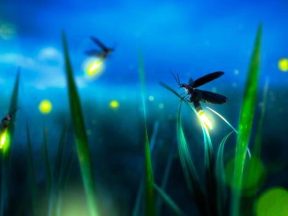Herbs & Plants. Acalypha indica. A useful source of medicine.
It is a plant used as a medicine for several therapeutic treatments. The leaf decoction is dropped into the ears to treat earache and infections. The paste made from powdered leaves is applied for skin infections. In some communities leaves are cooked as a vegetable.
Acalypha indica (Euphorbiaceae Family) is an erect, often simple-stemmed annual herb distributed widely throughout the tropics and is believed to originate from India, Indochina and Ethiopia. In Africa, the plant is found in Nigeria and from Sudan east to Somalia and south through DR Congo and East Africa to southern Africa including South Africa. It can grow up to an average height of one meter; leaves broadly ovate, base rounded to attenuate fairly rapidly.
The monoecious flower of Acalypha indica gives it the characteristic features due to its cup-shaped involucre that surrounds the small flowers in the catkin-like inflorescence.
Acalypha indica has been acknowledged by local people as a useful source of medicine for several therapeutic treatments. They consume parts of the plant for many medicinal purposes and its potent pharmacological activities enhance its use in traditional medicine such as an anti-inflammation, anti-bacterial, anti-cancer, anti-diabetes, anti-hyperlipidemic, diuretic, and anti-helminthic herbal plant. It is known to be a good cure for respiratory problems, rheumatoid arthritis, scabies, treatment of insect bites, and it also promotes wound healing.
The decoction made from the whole plant is used for treatment of bronchitis, epilepsy, emmenagogue, mouth ulcers, and as an expectorant to treat asthma and pneumonia. A bath in the whole plant decoction is taken against scabies, dermatitis and other skin infections. A poultice made from the whole plant is applied to treat headache.
The leaf of Acalypha indica is used across many communities to treat and manage a number of diseases including ganglions, diarrhoea, leprosy, laxative, diuretic gonorrhoea, rheumatism ulcers, ring worms, eczema, intestinal worms, boils and swellings, post-partum pains, scabies, and venereal diseases.
The decoction made from a mixture of the leaf powder and garlic is administered to treat intestinal worms. The leaf decoction is dropped into the ears to treat earache and infections. In some communities, the decoction prepared from the dry leaves is administered as an aphrodisiac remedy and also often used as a massage cream to treat pain of the joints. The leaf decoction is also given to treat headache and administered as a laxative. The leaves are emetic and hence administered to enhance vomiting in cases of poisoning. In fact, the leaf juice acts as an emetic for children. Crushed leaf poultice is topically applied to treat boils and skin infections. Leaf powder is applied as an antiseptic to enhance wound healing. In some parts of Africa, the leaf sap or ground leaves in water is used as eye drops to treat eye infections. The paste made from powdered leaves is applied on skin for treatment of skin infections including scabies. A leaf infusion is also taken as a purgative. In fact, the crushed aerial parts are also applied to skin parasites and an infusion is taken as a purgative and vermifuge.
In cases of obstinate constipation in children, the leaves are ground into a paste and made into a ball and carefully inserted into the rectum to enhance the relaxation of the sphincter and produce free motions. The juice of the crushed leaves is at times mixed with salt and applied to scabies and other skin ailments.
The roots of Acalypha indica are also much used in traditional medicine for treating many diseases such as gonorrhoea, diarrhoea, dysentery, chest pain, ear infections, piles, wounds, epilepsy, and are also used as a purgative. The root infusion or decoction is taken to treat asthma. In some parts of Africa, the root decoction is taken to treat stomach-ache and to eliminate intestinal worms. Additionally, the root decoction is also administered to treat diabetes, fever, and also taken as a laxative.
Besides the medicinal uses, the young tender shoots and leaves are cooked as a vegetable in some communities. The active ingredients of the plant include steroids, triterpenoids, glycosides, carbohydrates, alkaloids, flavonoids and tannins, cyanogenic glycosides acalyphin, and tri-O-methyl ellagic acid. The presence of these bioactive compounds may explain the anthelmintic, anti-inflammatory, and analgesic effects of this plant and hence justify its potent use in traditional medicine for treatment of a myriad of diseases and disorders.
Richard Komakech






